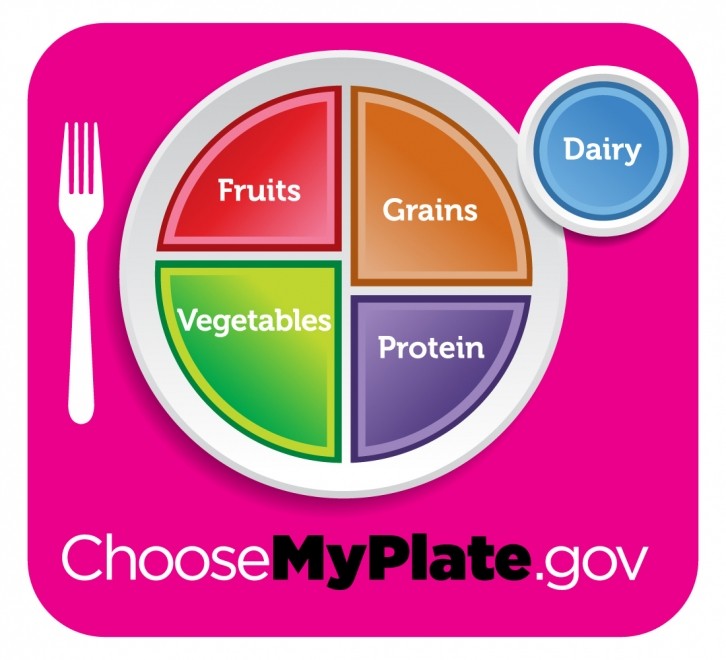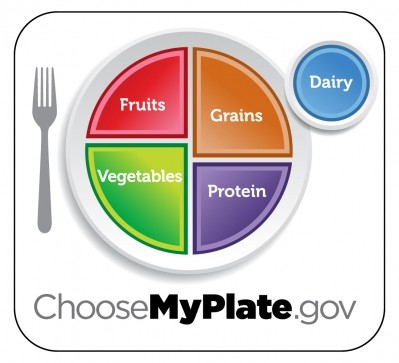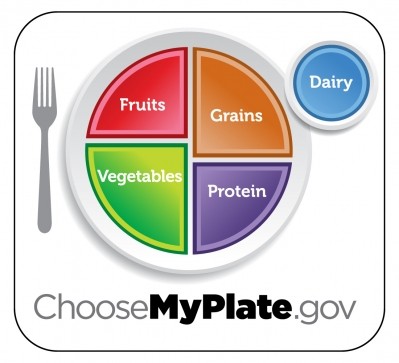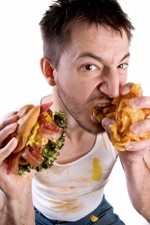MyPlate: Fruit, veg, grains, dairy – and protein?

However, some aspects of the US Department of Agriculture’s (USDA’s) new ‘MyPlate’ food icon have raised some eyebrows, notably the decision to mix and match food groups (fruits, grains, vegetables) with nutrients (protein).
Protein is not something most Americans are short of …
Adam Drewnowski, director of the Center for Public Health Nutrition at the University of Washington, told FoodNavigator-USA: “The new icon focuses on food groups (fruit, veg, dairy and grains), and doesn’t talk about fat, carbohydrates and so on. But it still includes protein, which is a nutrient, not a food group.”
Meanwhile, three of the four food groups listed - dairy, grains and vegetables - also contained protein, a shortage of which was “not a problem for most Americans”, he pointed out.
On the other hand, by focusing on food groups and not nutrients, MyPlate “sidestepped” wrangling about ‘good’ vs ‘bad’ fats or carbs that had dogged previous food icons, he said. “This is no bad thing. I think the food groups mean more to consumers anyway.”
While he “would have liked pictures”, the plate was also a big improvement on MyPyramid, which was a “masterpiece of graphic design” but a lousy tool for helping the average consumer eat more healthily, he said.
Oldways director of food and ntrition strategies Cynthia Harriman agreed the new plate was a big step forward, but said adding a few pointers for consumers under the main categories would be helpful on enlarged versions of the icon - on posters on classroom walls - for example.
"Under grains, I'd add 'mostly whole', under vegetables 'all colors', under protein 'plant-based too' and under fruit 'mostly whole'."
Easier to understand than Eatwell plate?
Marion Nestle, professor in the department of nutrition, food studies and public health at New York University, praised MyPlate, but also found it “odd” that protein was sitting amongst food groups.
“Americans don’t need more protein. Americans don’t need to eat more of anything except fruit and vegetables. But what they have told us is that focus group research showed consumers understand protein to encompass several food groups.”
She added: “Pictures would help but I like it that people get to put their own foods on the plate. I also think it's much easier to understand than the FSA’s pie chart, which is way too confusing [The UK Food Standards Agency’s Eatwell plate, which includes pictures and a section for fatty/sugary foods to eat in moderation].”
Joined up government?
However, it was frustrating that the positive messages embodied by MyPlate were being undermined by efforts by some members of Congress to single out nutrition initiatives for funding cuts, she said.
”Let’s not forget that most Americans still get their nutrition education from food companies and I would argue improving public health is not their primary goal.”
While GOP revisions to the 2012 Agriculture Appropriations bill would save money, blocking proposals to limit the marketing of unhealthy foods to kids could also be seen as “Congress appeasing the food industry”, she argued.
Her comments came as the Republican majority on the House Appropriations Committee this week approved a revised version of the 2012 Agriculture Appropriations bill that would significantly cut federal funding for nutrition programs.
The revised legislation questions the government’s proposal to curb marketing of unhealthy foods to children and urges the Food and Drug Administration to limit rules requiring calorie counts on menus.
It would also put a block on new nutritional standards for school meals and reduce the Women, Infants and Children (WIC) program funding.
MyPlate and national security
By emphasising choice, cost savings (via lower healthcare costs) and even national security when ‘selling’ the new food icon to the press, however, agriculture secretary Tom Vilsack had neatly countered claims that the government was going down the ‘nanny state’ route by telling Americans what to do, she noted.
“I was very impressed by his performance in the press conference yesterday.”
Affordable health
Whether the new food icon was an ‘economic plate’ however, remained to be seen, said Drewnowski. “It’s great that dietary guidelines say we should eat fresh , minimally processed fruits and vegetables, fresh fish and lean meat, but these cost money. Are we asking low income people to adopt a high income diet?
“It’s easy for people to say that people on low incomes should boil up a big lentil and vegetable soup and make it last all week, but who wants to do that?”
Click here to read more about MyPlate










